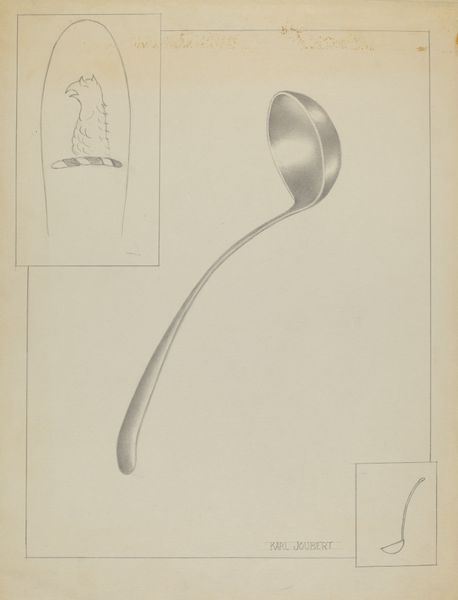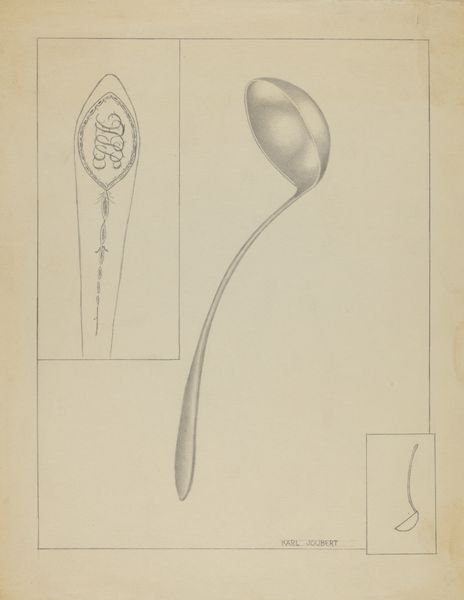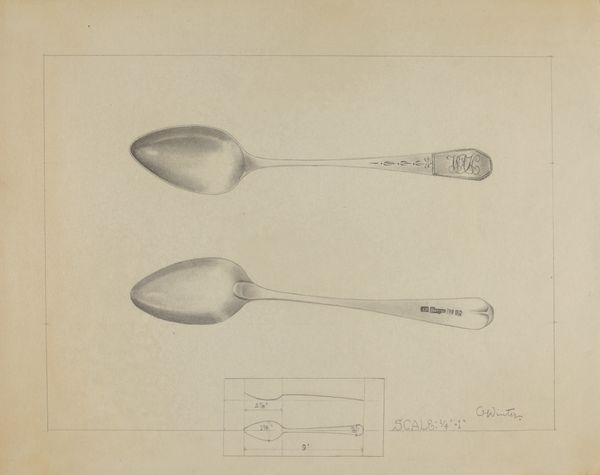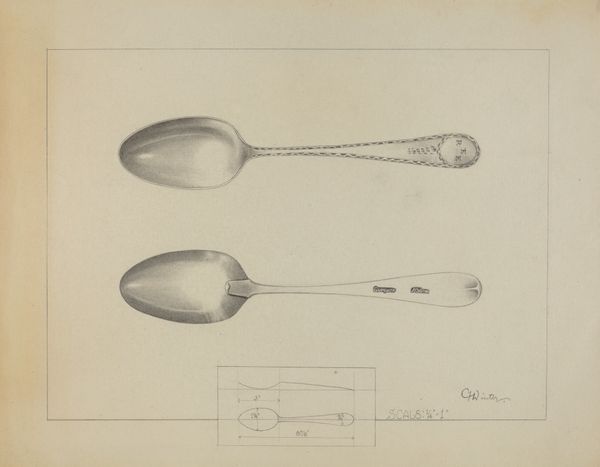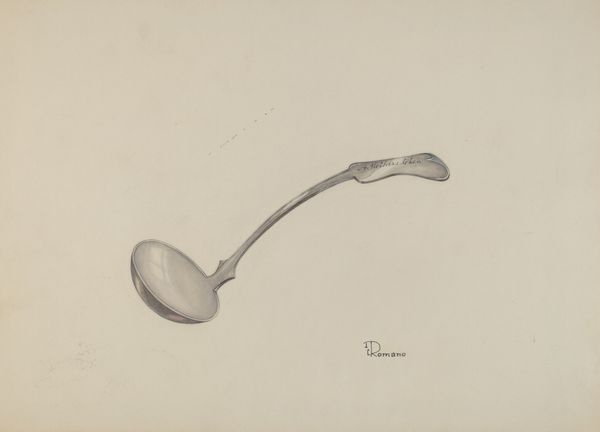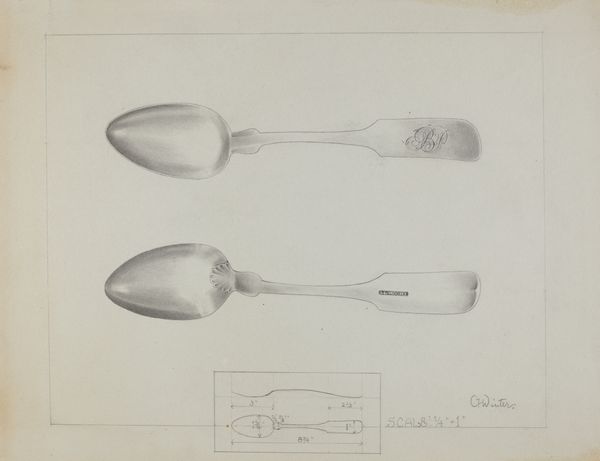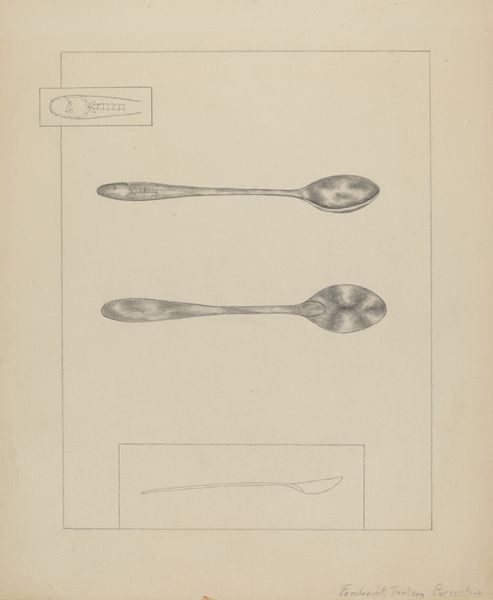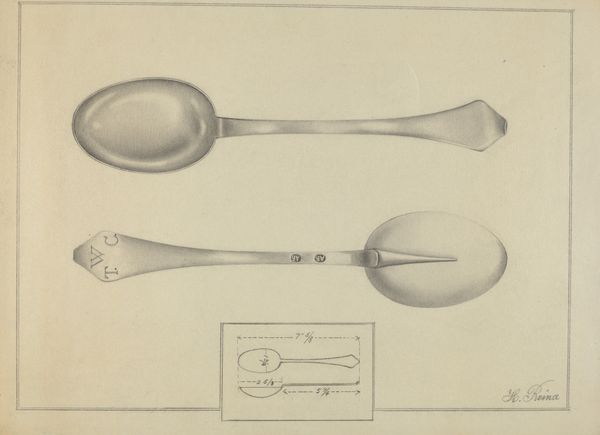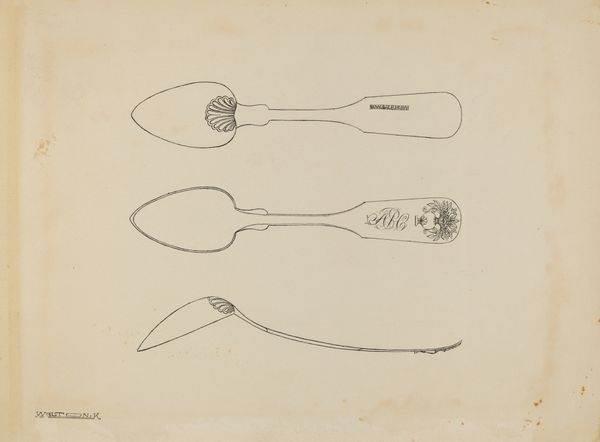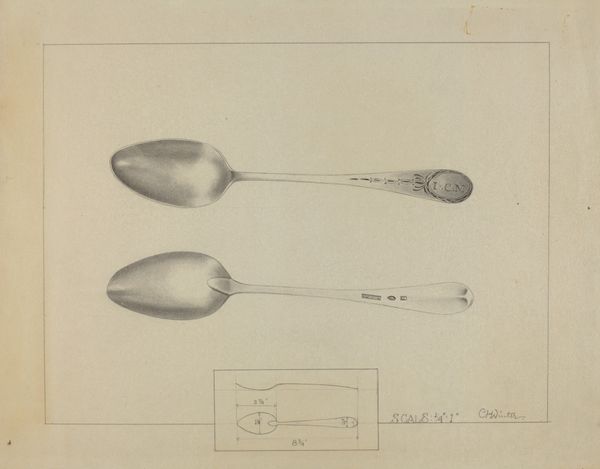
drawing
#
drawing
#
geometric
Dimensions: overall: 37.1 x 26.3 cm (14 5/8 x 10 3/8 in.) Original IAD Object: 11" long; 3 3/4" wide
Copyright: National Gallery of Art: CC0 1.0
Editor: This is a drawing titled "Silver Ladle" by George Fairbanks, made around 1937. It's a simple, detailed rendering in pencil, almost like a technical blueprint. What do you see in this piece, beyond just a utensil? Curator: It's tempting to simply see a drawing of a ladle, but I think this offers insight into broader social structures of the time. Consider the 1930s, during the Depression, where discussions about wealth distribution and class were rife. Here we have a detailed depiction of an object often associated with serving – a silver ladle no less. Is the artist perhaps making a subtle comment on the divide between those who serve and those who are served? The meticulous detail elevates the status of this common object and is signed with an elaborate cursive letter. What assumptions might the drawing encourage us to make? Editor: That's a compelling point. The detail almost feels… aspirational? The clear dimensions do also make it feel like a study, for manufacture maybe. Curator: Exactly. It raises questions about who has access to silver, who designs it, and whose labor goes into creating such an object, however modest. This elevates an item meant to make food presentable, that most families likely made do without. Considering Fairbanks’ place in the cultural discourse of the time—do you see parallels with other Depression-era art? Editor: I'm now reminded of some WPA photography that sought to ennoble labor. This ladle rendering could be seen similarly. The way the light reflects suggests it's quite shiny. What function did this detail serve? Curator: Absolutely! The shininess elevates it, placing a value on it. Perhaps this rendering, much like those photographs, is part of a broader dialogue about value, labour and the representation of everyday objects in a time of economic inequality. It's far more than a simple sketch, when seen from this viewpoint. Editor: I hadn't thought of it that way initially, but considering the social context gives the drawing a new layer of meaning and even elevates a basic drawing of a simple ladle. Curator: Precisely! And I think that’s key – to read the artwork within broader sociopolitical contexts, beyond aesthetic readings.
Comments
No comments
Be the first to comment and join the conversation on the ultimate creative platform.
